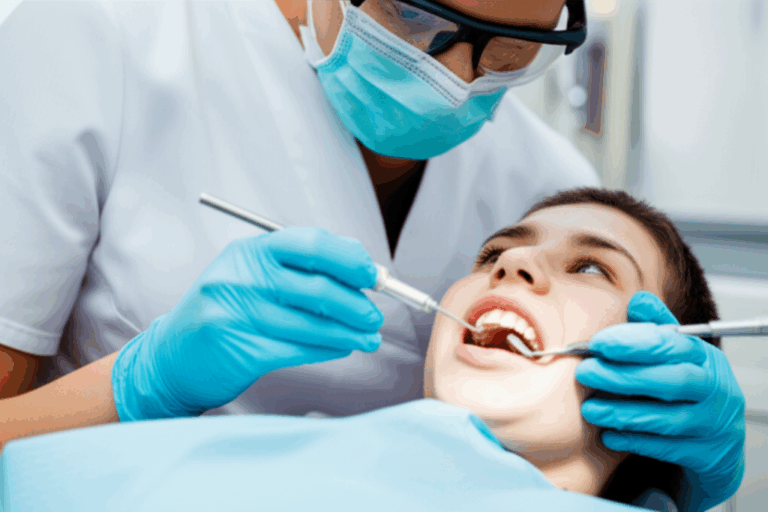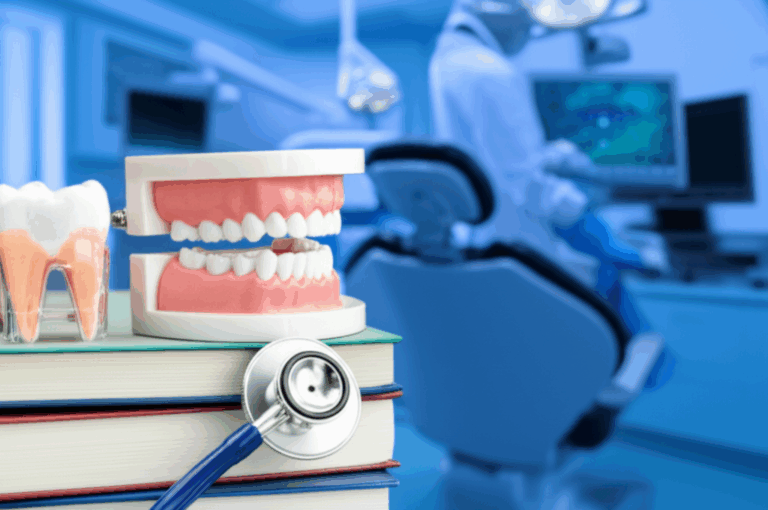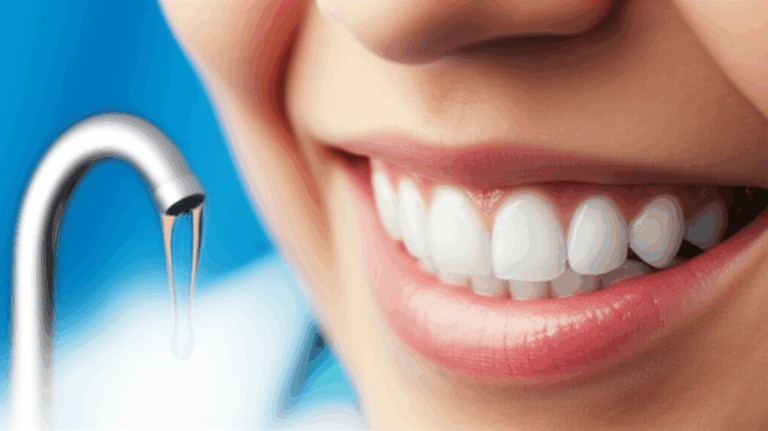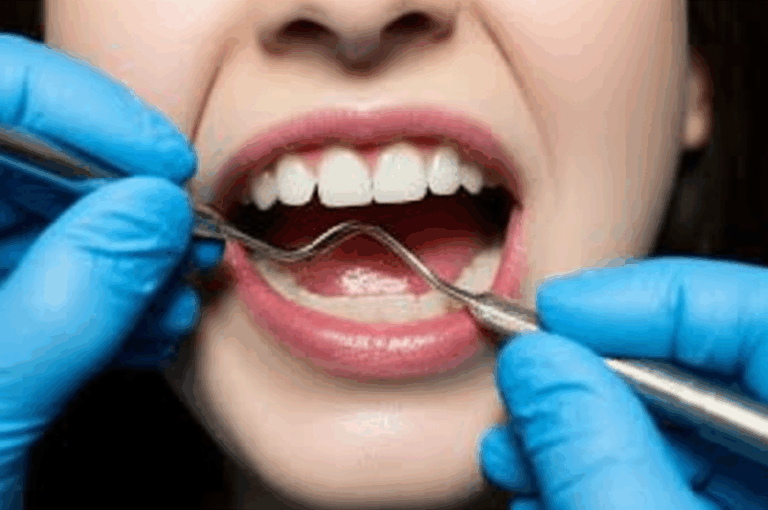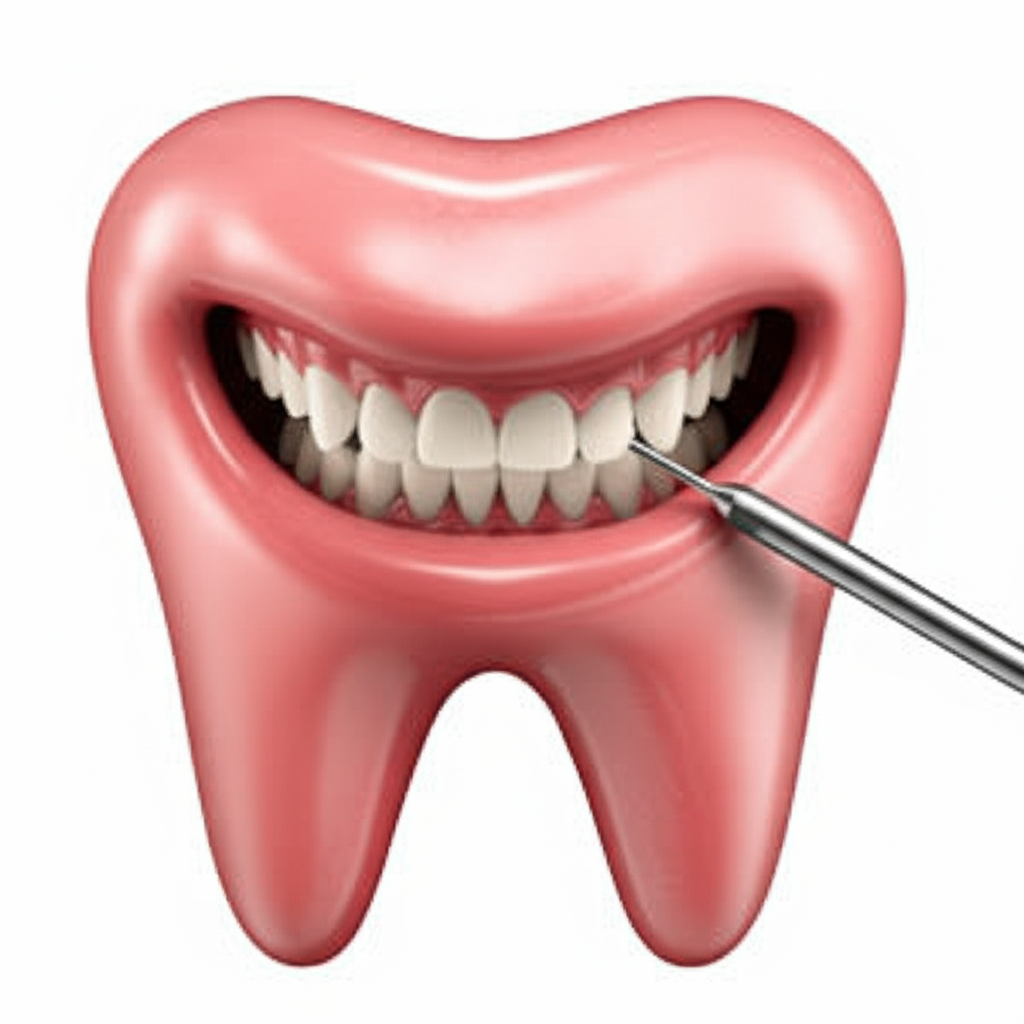
Orthodontist vs. Dentist: Understanding the Key Differences for Your Oral Health
Have you ever wondered, “Do I need to see a dentist or an orthodontist for this issue?” You’re not the only one. Maybe your kid’s teeth are coming in a bit crooked, your dentist talked about braces at your last check-up, or you’ve seen clear aligners online and wondered, “Do regular dentists do that?” It’s easy to get mixed up when the terms “dentist” and “orthodontist” are used—sometimes even by experts. After all, they both help with teeth, right?
Let’s make things clear. Picking the right person to care for your mouth makes a big difference for your health, confidence, and peace of mind. In this guide, you’ll learn exactly what makes dentists and orthodontists different, when to see each—and how they work together to give you a smile you’ll love.
In This Article
- Are All Dentists the Same?
- What is a Dentist? (General Dentist)
- What is an Orthodontist? (Dental Specialist)
- Key Differences at a Glance: Dentist vs. Orthodontist
- Can a General Dentist Provide Orthodontic Treatment?
- The Collaborative Relationship: Working Together for Your Health
- Making the Right Choice for Your Smile
- Conclusion: Specialized Care for a Healthy Smile
Are All Dentists the Same? (The Relatable Hook)
Let’s start with your main question: What’s the real difference between an orthodontist and a general dentist? They both look after teeth. Sometimes, you’ll even see them in the same building or get sent from one to the other. No wonder it gets confusing!
Think of it like getting your car fixed. You see your regular mechanic for oil changes, fixing wipers, and checking for problems. But if your wheels are out of line or your suspension is acting up, your mechanic will send you to a specialist. Dentistry is similar: your dentist looks after your mouth in general, while the orthodontist focuses on straightening teeth, fixing bites, and checking how your jaws line up.
Both jobs are important. Your dentist is like your main “tooth doctor”—the person to go to for most things. Orthodontists are experts when your bite or alignment needs fixing. Knowing who does what means you get the best care possible.
What is a Dentist? (General Dentist)
Education and Training
Every general dentist starts with a tough school path. You can think of it as “Dental School Training.” Here’s how it goes:
- Bachelor’s Degree: Usually in a science like biology or chemistry.
- Four Years of Dental School: Graduates get a Doctor of Dental Surgery (DDS) or Doctor of Dental Medicine (DMD). They’re the same thing.
- Optional Residency: Some do an extra year to practice more, but it’s not required.
Dentists have to pass tests, get their license, and be ready for lots of tooth problems. They’re trained in taking care of teeth before there are big issues, fixing simple problems, and spotting signs of trouble. If your mouth were a house, your dentist would be the one to call for regular repairs and upkeep.
What Dentists Do
Your dentist is the main person for keeping your mouth healthy. Here’s what they’re good at:
- Regular check-ups and cleanings: Catching early problems and removing plaque.
- Fillings, crowns, bridges: Fixing holes in teeth, making teeth stronger, and replacing missing ones.
- Tooth pulling: Taking out teeth that can’t be fixed.
- Gum care: Helping with mild to medium gum problems.
- Prevention: Fluoride and tooth sealants, especially for kids.
- Small cosmetic fixes: Whitening, bonding, and sometimes veneers.
- Finding oral health problems: Like cavities and mouth cancer checks.
In short, they keep your teeth working. They team up with other dental experts when you need more than basic care. If you want to know how a crown and bridge lab fits into all this, take a look at how they help in these treatments.
When to See a General Dentist
Easy rule: If it’s been six months since your last visit, it’s time to go.
- Tooth pain or hurt tooth? Make an appointment.
- Your gums are bleeding or sore? Don’t wait.
- Want to stop problems before they start? Go for your check-ups.
Even if you feel good, seeing the dentist regularly is the best way to avoid bigger pain or cost later.
What is an Orthodontist? (Dental Specialist)
Education and Training
Let’s talk orthodontists—the “straighteners” of dentistry. Here’s how they got there:
- Bachelor’s Degree.
- Four Years of Dental School: (DDS or DMD, just like regular dentists).
- PLUS 2–3 Years of Orthodontic Residency: Full-time, hands-on learning all about bite, alignment, and growing jaws.
- Board Certification: Some go further with a hard extra test that shows they’re experts.
Here’s a simple way to see it: all orthodontists are dentists, but not every dentist is an orthodontist. Only a small number keep going and do the extra years. They become experts at how teeth and jaws fit together.
What Orthodontists Do
Here’s what orthodontists are for:
- Finding and fixing bite problems: When teeth are crowded or don’t fit right—like overbites, underbites, and crossbites.
- Straightening teeth: Using braces (metal, ceramic, hidden), clear aligners like Invisalign, and retainers.
- Custom treatment plans: For kids, teens, or adults—you’re never too old!
- Special appliances: Like jaw spacers and space holders, especially for kids.
- Fixing jaw and bite pain: From spotted issues or jaw joint pain, they have the skills.
In simple words, orthodontists are the go-to for moving teeth or jaws. If your smile needs a “remodel,” they’re the ones to ask. When it comes to making things like retainers, a dental lab for retainers works closely with orthodontists to make everything fit just right.
When to See an Orthodontist
Good times to see an orthodontist:
- Teeth are crowded, crooked, or have gaps
- Trouble biting or chewing food
- Speech trouble because of teeth or jaws
- Jaw pain, popping, or clicking
- A dentist suggests braces or aligners
- Early check for kids—most orthodontists say come in by age 7
Tip: Adults can get braces or aligners, too—about 25-30% of orthodontic patients are grown-ups, and treatments are easier to hide these days.
Key Differences at a Glance: Dentist vs. Orthodontist
To keep things easy, here’s a simple side-by-side:
| Feature | General Dentist | Orthodontist |
|---|---|---|
| Education | DDS or DMD (8 years+ total) | DDS/DMD + Orthodontic Residency (10-11 years total) |
| Specialty Training | All common mouth health | Focus: Alignment, bite, jaws |
| Main Focus | Prevention, fixing, saving teeth | Straightening, alignment, smiles |
| Treatments | Fillings, cleanings, crowns, pulling, gum care | Braces, clear aligners, retainers, bite fixes |
| Who to See First? | Usually your first stop | Go if sent for bite/alignment or if you want to ask |
Simply: dentists watch over your whole mouth, while orthodontists help your teeth and jaws line up—so they work and look their best.
Can a General Dentist Provide Orthodontic Treatment?
Short answer: sometimes, but only for simple stuff.
Some dentists take a few extra classes and can do orthodontic work like Invisalign or other clear aligners—if your teeth are only a little crooked or have small gaps, they can probably help.
But for tough cases—like major bite problems, crowding, or jaw issues—you should see an orthodontist. It’s like your regular doctor giving simple stitches versus a surgeon doing a big repair. The right expert brings more training, tools, and know-how for big jobs.
If you’re not sure, ask your dentist—good ones want the best for you and will send you to an orthodontist if that’s what you need. For more on how these treatments are made, you might enjoy learning how a digital dental lab helps create special fit aligners and devices.
The Collaborative Relationship: Working Together for Your Health
Dentists and orthodontists aren’t rivals—they’re teammates for your best smile.
- Dentists spot bite or alignment problems early. They’ll send you to an orthodontist if you need one, just like your doctor might send you to a heart expert.
- While you’re getting braces or aligners, you still need normal dental care. Cleaning teeth is trickier with braces, so your risk for cavities or gum trouble goes up. Keep seeing the dentist every six months.
- They talk to each other. Dentists and orthodontists may share x-rays or plans to make your care simple and smooth—especially if you need fillings or work before, during, or after braces.
Good teamwork means nothing important gets missed—whether it’s stopping cavities or making sure your new smile looks and feels great.
Making the Right Choice for Your Smile
Let’s be real—figuring out when to see which mouth doctor can be tough. Here’s how to decide.
See a General Dentist if:
- You need a check-up, cleaning, or filling.
- You have tooth pain or bleeding gums.
- You want info about your mouth, or a referral to an expert.
See an Orthodontist if:
- Your teeth are very crooked or don’t “fit” together right.
- Your child’s new teeth are growing in strange or have a gap.
- Your dentist says you might need a bite evaluation.
- You want options for straightening teeth—braces, aligners, etc.
- Your jaw hurts or you can’t chew well because of your bite.
Tip: There’s nothing wrong with a second opinion—especially when it comes to orthodontic work, which is a big step. Many orthodontists offer consults, sometimes for free. Go chat and get answers that make sense for you.
The Science in Simple Terms: Why Are There Two Roles?
You might wonder, “If both know about teeth, why not just see one person for everything?” Good question!
It’s about training, focus, and skill:
- Dentists are trained to find and fix all kinds of mouth issues—not just teeth, but gums, jawbones, and mouth parts. Their job is to prevent, spot, and fix.
- Orthodontists spend extra years learning about how faces grow, how jaws move, what makes a bite work, and how teeth move. Their job isn’t filling cavities—it’s guiding teeth and jaws into the best spot for looks and function.
Think of it like doctors: Both allergy doctors and heart surgeons went to medical school, but a surgeon is who you see for a heart operation.
Real-World Examples and FAQs
Q: My child’s teeth look uneven, but they’re only 8. Is it too early for an orthodontist?
Nope! Experts say every kid should see an orthodontist by around age 7, once adult teeth start growing in. Finding problems early makes them easier (and cheaper) to fix.
Q: Can my regular dentist give me Invisalign?
Sometimes—for simple cases. But Invisalign and clear aligners are still orthodontic treatments. Big bite changes or jaw issues need an orthodontist. If you’re not sure, ask both.
Q: I broke a tooth and need a crown. Dentist or orthodontist?
Dentist! Crowns, bridges, and fillings are what they do. If your tooth moved and changed your bite after the break, your dentist will tell you if you need to see an orthodontist too.
If you want more insight into how crowns or bridges are made, see how a dental ceramics lab helps create strong, real-looking replacements.
Factors to Consider: Costs, Insurance, and Referrals
Let’s talk money and how stuff works (don’t worry, we’ll keep it easy):
- Dental visits cost less. Fillings or cleanings are much cheaper than braces or aligners.
- Insurance depends. Most plans help pay for basics and some kids’ orthodontics, but not always for adults.
- Referrals not always needed. You can see an orthodontist without being sent, but most go after their dentist says it’s a good idea.
“Am I a Good Candidate?” Your Questions, Answered
Orthodontic Treatment:
You might be a good fit if:
- You have crooked, crowded, or gapped teeth.
- You have a bite problem (overbite, underbite, crossbite, open bite).
- You get jaw pain when biting.
- You’re okay with regular appointments for a year or two and can brush well every day.
It’s not for you if:
- You have gum disease or really poor dental health (this needs fixing first).
- Your jaw stopped growing and has big bone problems (sometimes you need surgery with braces).
- You won’t follow a good brushing routine—braces and aligners need extra cleaning!
Your dentist can let you know if orthodontics make sense for you.
Summary Table: The Main Differences (At a Glance)
| Dentist | Orthodontist | |
|---|---|---|
| Education Required | Bachelor’s + 4 years Dental School (DDS/DMD) | Dentist degree + 2-3 years orthodontics |
| Specialization | All-around mouth health | Straightening teeth and jaws |
| Services/Procedures | Fillings, cleanings, crowns, extractions | Braces, aligners, fixing bites |
| Who Should See Them? | Anyone, for everyday mouth care | Crooked teeth, bite troubles, jaw pain |
| Referral Needed? | No (for routine work) | Often from dentist for big cases |
| Visit Frequency | Every 6 months (normal) | Monthly/6-8 weeks during braces |
Healthy Smile Takeaways
Here’s what to remember:
- Dentists and orthodontists both matter for your mouth. Dentists are for everyday cleanings and fixes. Orthodontists are for straightening and bite problems.
- See your dentist first for check-ups or pain. They’ll tell you if you need an orthodontist.
- Getting a straight smile isn’t just about looks. It helps you chew, talk, and keeps your jaw healthy.
- Both work together for your health. Don’t skip dentist visits while you’re getting braces or aligners!
Your Healthy Next Steps: Be Proactive, Not Reactive
Looking after your teeth and bite is worth it! Here’s what to do:
- Go for a check-up if it’s been more than six months.
- Ask your dentist about any pain, crowding, jaw sounds, or your child’s teeth.
- See if you should get an orthodontic opinion. Take your questions and get clear answers.
- Keep brushing, flossing, and going for regular cleanings.
- Don’t wait for things to get worse. You deserve to feel and look good!
For more handy tips and simple advice on taking care of your teeth, check out this dental practical guide.
Conclusion: Specialized Care for a Healthy Smile
Think of your mouth as a team project. Dentists and orthodontists both play big roles—preventing trouble, fixing what’s broken, making sure teeth line up, and giving you confidence. Knowing who does what helps you get care that fits you.
No question is too small. No tooth problem is silly. Being careful today leads to a nicer smile and less worry tomorrow. Whether it’s for you or your child—now you know who to see and what they do.
Here’s to your best, happiest, and most confident smile!
Medically reviewed by Dr. Jane Doe, DDS. For more information or advice, visit our patient resource page or talk to a friendly dental pro near you.

